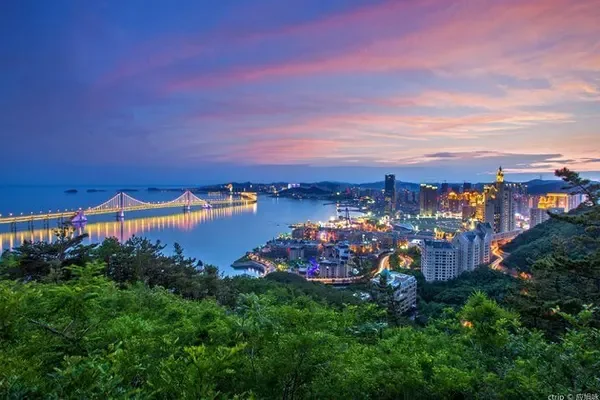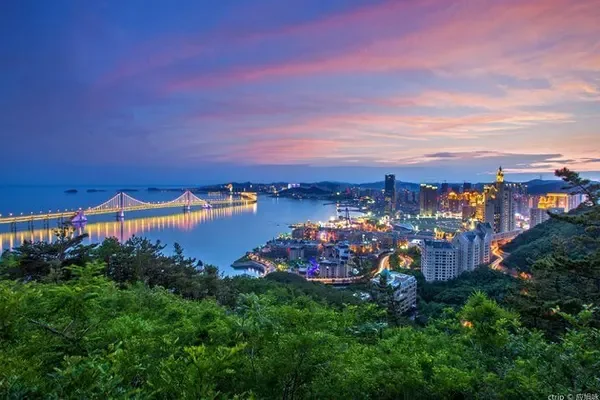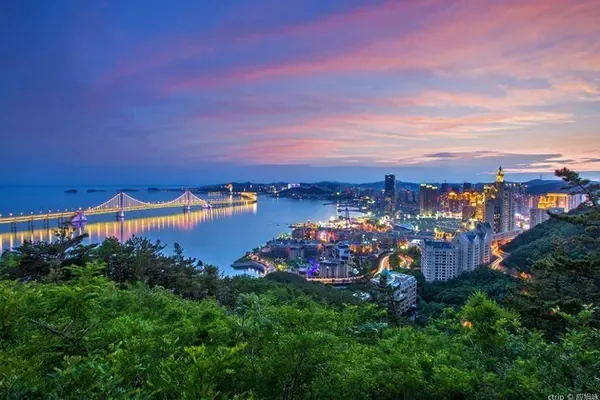Drive more than 120 kilometers from the capital to the "Zhuolu Chinese Three Ancestors Holy Land Yellow Emperor City" scenic spot in Zhuolu County, Zhangjiakou, Hebei Province, looking for the origin of China's 5,000-year civilization, history and culture.


Zhuolu County is famous all over the world for the "Yanhuang War Against Chiyou" 5,000 years ago. People in the world habitually refer to this battle as the Battle of Zhuolu. This battle changed history, and only then did we have the great national integration we have today. Nowadays, searching for the root of China and visiting the Holy Land of the Three Patriarchs has become an important reason for people to go to Zhuolu...



The Yellow Emperor City Scenic Spot, the Holy Land of the Three Patriarchs of China, was built on the site where the human ancestors of the Chinese nation, the Yellow Emperor, Yan Emperor, and Chi You lived, worked, and fought in Zhuolu. There are five main attractions: the Chinese Three Ancestors Hall, the Chinese Hefu Altar, the Yellow Emperor City Ruins, the Yellow Emperor Spring and the natural landscape Xuanyuan Lake.

The Hall of the Three Ancestors of China is far away from the Altar of Hefu, forming a group of magnificent buildings. The two landscapes mainly highlight the "Culture of the Three Ancestors" and "Culture of Hefu".

The Hall of the Three Ancestors of China enshrines the statues of the three ancestors Yandi, Huangdi and Chiyou. Chi You on the left is brave and sturdy, the Yellow Emperor in the middle is majestic and majestic, and Emperor Yan on the right is wise and elegant. The four walls of the main hall are painted with four large-scale murals: "Zhuolu War", "Hefu Busan", "Dingdu Zhuolu" and "Banquan War".
5,000 years ago, the three ancestors lived here with their respective tribes, forming the root of the Chinese nation. It is said that there are large-scale activities of worshiping ancestors and offering incense and offering sacrifices to the past every year.


Huangdi Spring was called "Banquan" in ancient times and "Black Dragon Pond" in folk, and it was the place where the Yellow Emperor's tribe drank water. The difference from other springs is that the annual water temperature of Huangdi Spring is between 12.3°C and 13.4°C, and the spring water comes from a depth of 5,000 meters underground. There are 7 springs of different sizes. Because the water not only contains strontium, calcium and magnesium carbonate, but also radon gas, a provincial earthquake monitoring station was built next to Huangdi Spring to monitor earthquakes by using changes in radon gas in the water.
Standing by the Yellow Emperor Spring, looking at a pool of green water, people soon found that all the branches of the trees beside the pool were sticking out and gathering towards the center of the spring water. The place of residence peeks at the changes in the center of the lake. Maybe it's the water vapor from the warm spring water that attracts the trees and gathers them together, just like sunflowers blooming against the sun; maybe the plants here are full of curiosity like human beings, vying to explore the secrets hidden under this pool of green water. secret……

The Chinese Hefu Altar is based on the records of "Historical Records: The Book of the Five Emperors": After the Yellow Emperor fought Chiyou and Emperor Yan, the Quartet fought to eliminate hidden dangers of war. Afterwards, he "fitted Busan, and settled in the city of Zhuolu".
Talisman is an ancient soldier talisman. Made of bamboo, wood, gold, copper, jade and other materials, they are of different sizes and engraved with the shapes of dragons and tigers. One body is divided into two halves, one half is handed over by the emperor, king, general, and commander to the gatekeepers and those in charge of food, weapons, soldiers and horses; When the order is given, it is handed over to the specific task performers such as enlisting generals, customs clearance and sending ultimatums, as the proof of order for the task performers. According to historical records, shortly after the defeat of Emperor Yan, meat porridge from the north came to the vicinity of Zhuolu, and the Yellow Emperor sent troops to fight at the foot of Bijia Mountain. At this time, the soldiers sent to the east, west, south, and north came back triumphantly one after another, and returned to the Yellow Emperor with amulets. Therefore, the Yellow Emperor chose a day to hold a grand congratulation ceremony in Busan, marking that "the district Yu has been peaceful, and the world is at peace." As a result, Hefu Busan has become the first founding ceremony and extremely grand military parade in the five thousand years of Chinese history.
In the center of the Chinese Harmony Altar is a giant sculpture of Kowloon holding the sun, surrounded by 56 ethnic totem poles, symbolizing the 56 ethnic groups of the People's Republic of China. Standing at Hefutan, you can overlook the Guanting Reservoir and the slowly rotating windmill on the wetland. Looking at the giant dragon and recalling the 5,000-year history of the Chinese nation, you can more deeply appreciate the strength of the nation and the growing prosperity of the country.


Half-day visits and browsing, man-made landscapes, natural landscapes, and historical sites are dazzling. I heard that there is a "Qingwa Water Village Hot Spring Resort" nearby, which integrates eating, living and soaking, so I drove there.

Walking into the restaurant of the resort, the big pot in the center of the table immediately caught our attention. We ran over with our camera in hand, and recorded the fish stick pancakes being made by the noodle master chef. Zaotai fish is the authentic farm meal of this store. The fish is grass carp, squid and carp from Guanting Reservoir. A few sips of the Great Wall wine produced by the local wine base is a refreshing experience.

Dinner is a feast for us foodies. Bashang Sanbao Gaiwowo, Yuxian tofu tendon, stir-fried fresh daylily, mixed pepper sprouts, willow sprouts, farm white meat made from locally raised Tibetan pigs, and the famous and unknown farm dishes... What attracts people's attention the most is that one of the dishes uses a shovel as a utensil ingeniously. The farm meal here is different from the farm meal in the suburbs of Beijing. It reflects the dietary characteristics of the Zhangjiakou area. Naked oats have become the protagonists of the farm meal outside the Great Wall.

After a full meal and a rest, we began to experience the hot springs here. Huailai County, Zhangjiakou is rich in hot spring resources, and we saw several hot spring health centers on the road.

This hot spring focuses on health spa treatments. The functional hot spring pools include imperial concubine baths, suspension baths, Vichy baths, acupuncture baths, stone baths, hydromassage bed baths, and foot baths. They are very fresh. Experience it yourself, some streams are fine and broken, some streams are thick, and some streams hit various acupuncture points of the human body. After rushing down in a circle, it seems that the shoulders suffering from frozen shoulder are much more relaxed, and the whole body is very comfortable.


Seeing the color of the water in a pool is very red, I found out that it is a red wine health pool blended with local specialty wine. There are several bubble pools outside. Looking at the rising heat through the window, I still haven't worked up the courage to try it. Quiet lounge, fast food restaurant with complete food, gym, tea room, a good place to spend a leisure holiday comfortably...
While wandering around the hot spring area, I found that there are a lot of elderly people here, so I chatted with them,
It turns out that this hot spring resort benefits the local elderly groups with hot spring resources. Elderly people over 60 years old can apply for a hot spring senior card and a monthly card with relatively flexible time. An old man proudly told me that he would come here for bubbles when he had time. The old friends gathered to chat, keep fit and have a good time.

Stayed at the resort at night. Because of the rich hot spring resources, there are hot spring pools in the room and in the yard.

In two days, I visited the Holy Land of the Three Ancestors in Zhuolu County and Huailai County in Zhangjiakou, soaked in the hot springs of Qingwa Water Town, and tasted farm meals outside the Great Wall. It was a great time!
Kind tips:

Traffic route: See the traffic route map. Point A is the Beijing Longze Subway Station. Point B is the cultural tourism area of the Yellow Emperor City Site, the Holy Land of the Three Patriarchs of China. Point C is the Qingwa Water Village Hot Spring Resort in Huailai County.
Ticket information:
Tickets for the Cultural Tourist Area of the Yellow Emperor City Site, the Holy Land of the Three Patriarchs of China, 80 yuan per person
Qingwa Water Town Hot Spring Resort accommodation and tickets:
Accommodation price (weekdays): 100 yuan/room for the upper courtyard, 138 yuan/room for the intermediate courtyard, 220 yuan/room for the orchard (standard rooms and triple rooms are available)
Hot Spring Tickets: Guests staying in the resort can enjoy a discount of 38 yuan per person for hot spring tickets


